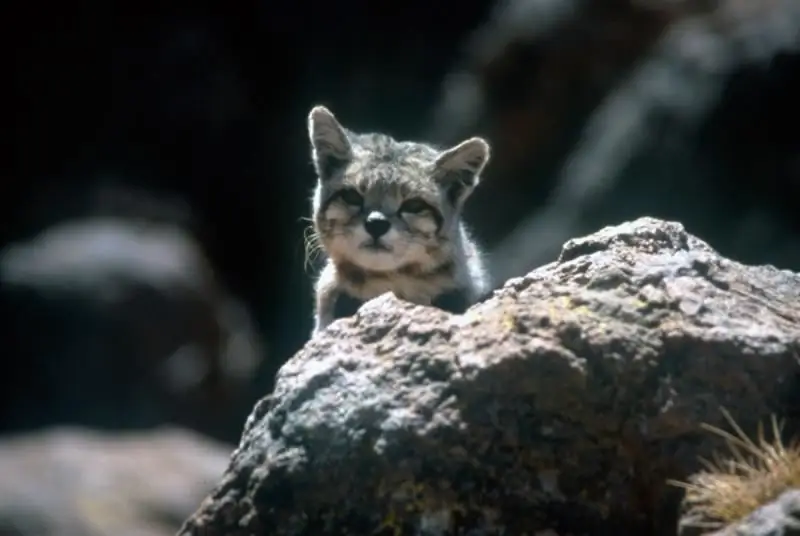
Table of contents:
- Author Bailey Albertson [email protected].
- Public 2024-01-17 22:26.
- Last modified 2025-01-23 12:41.
The secret life of the Andean cat

One of the great mysteries of South America is the little Andean cat. A ferocious impudent predator, about whose life and habits practically nothing is known for certain. This is the rarest species, until quite recently considered extinct, but happily regained for humanity.
Content
-
1 History of the species
- 1.1 Video: the very first footage of the Andean cat
-
1.2 Systematics
1.2.1 Photo Gallery: South American cats - similarities and differences
- 1.3 External features
-
2 Andean cats in the wild
- 2.1 Habitats
-
2.2 Lifestyle
- 2.2.1 Video: An Andean cat caught a chinchilla for her cubs
- 2.2.2 Photo gallery: Andean cat hunting grounds
- 2.3 Problems of survival
-
3 Keeping an Andean cat in captivity
3.1 Video: Andean cat is returned to the wild
History of the species
All that is known today about the amazing Andean cat, science owes the dedication of scientists and … the courage of photographers. Without their work, it would have been impossible to prove that this rare species still exists in nature, and has not disappeared forever. However, even some two decades ago, zoologists were inclined to think that the Andean cat was irretrievably lost from the fauna of our planet, and we did not have time to learn practically nothing about it.

The Andean cat is the least studied predator in the Western Hemisphere
The Italian naturalist Emilio Cornalia discovered a new species and first described the Andean cat (Leopardus jacobita) in 1865, but since then few have seen this mysterious animal with their own eyes. All information about this strange beast was limited to scarce museum exhibits: three skulls, fifteen samples of fur and leather, and a couple of photographs accidentally taken in the early eighties of the last century.

Italian naturalist Emilio Cornalia discovered the species Leopardus jacobita, which forever stamped his name

In Indian legends, the Andean cat appears as a mystical ghost
Chilling myths did not stop the interest of researchers who wanted to make sure that the Andean cat exists not only in scary tales and did not add to the list of forever extinct animal species. To find the mysterious predator, several scientific expeditions were undertaken to the Andes, and now, finally, one of them turned out to be successful.

In the iconic photograph from the Cavern de las Brujas, the female is ready to protect her cub.
The very first shooting of a unique mountain predator dates back to October 1996 - the footage turned out to be not very high-quality, but it is perfectly possible to see the animal, which until then was considered extinct by many. More videos of the Andean cat appeared later; photo and video materials have become irrefutable confirmation that a rare species exists.
Video: the very first footage of the Andean cat
Taxonomy
Even with the taxonomy of this animal, there was some confusion. For a long time, the Andean cat has been ranked as a separate, individual genus Oreailurus on the basis of some exclusive features of the species - for example, the unique device of the tympanic membrane, which endows the predator with ultra-sensitive hearing.

The hearing bullae of this cat are enlarged, allowing it to hear perfectly.
In many scientific works, the old classification is still preserved. But recent studies have made it possible to find in the animal more in common with South American (tiger) cats and attribute it to this genus. Tiger cats in Latin are called Leopardus, although the species of leopards has nothing to do with it - the genus unites nine species of medium-sized wild cats that live on the South American continent.
Photo gallery: South American cats - similarities and differences
-

Andean cat - Andean cat is a mysterious and secretive alpine predator
-

Chilean cat -
Chilean cat (kodkod) is nocturnal in humid mountain forests
-

Long tailed cat - The long-tailed cat (margai) spends almost its entire life on devyas
-

Geoffroy's cat - Geoffroy's cat - this species was almost completely exterminated for the sake of very beautiful fur
-

Oncilla - Oncilla - "little jaguar" in translation - the smallest wild cat in the Western Hemisphere
-

Ocelot - Handsome ocelot avoids open spaces and settles in tropical forests
-

Pampas cat - The Pampas cat (bell) is often confused with the Andean - they live next door and lead a similar lifestyle
-

Leopardus pajeros - The popular Mitsubishi Pajero SUV got its name from the Leopardus pajeros
-

Leopardus braccatus - Leopardus braccatus (pantanal cat) has the longest and fluffiest fur in the genus Leopardus
External features
The notoriety of the Andean cat is most likely fueled by its appearance, which is indeed somewhat gloomy. Deep-set eyes shine from under the low-hanging brow arches … But this way nature protects the animal's eyesight from strong winds and snowstorms - the most common weather for winter mountains.

Nature has provided the Andean cat with everything it needs to live in harsh conditions
The face of this cat is somewhat bearish in shape. The eyes, ears and nose are disproportionately large - the sight, hearing and smell of the predator are very developed, because a successful hunt is for her the first question of survival in the conditions of a rather poor mountain fauna. The head seems too small in proportion to the rather massive, muscular body.

The eyes of the night predator glow brightly in the dark
The thick fur of a wild mountain cat with an abundant undercoat is designed to protect it from severe weather disasters - both from heat and severe frosts. The climate in the mountains is sharply continental, and the strongest temperature drops occur even within one day. The body of the predator is evenly covered with thick fluffy hair of a silvery-sand color with dark spots turning into rings on the tail and legs.

Mountain cat is excellent in the art of disguise
The length of the hair on the cat's body reaches five centimeters. The fur on the back is intensely dyed, and the lower part of the body, from the chin to the groin, is lighter. The nuances of the colors vary depending on the main habitat of the animal. The body ends with a luxurious tail, thick, strong and long - with its help the cat keeps balance well during long jumps and rapid movements on almost vertical surfaces.

The tail of the Andean cat is two-thirds of its body length
The dimensions of these wild predators do not particularly exceed domestic cats: their weight ranges from four to seven kilograms, and their height is about sixty centimeters. The average body length in an adult is seventy centimeters, plus an almost half-meter tail - in some animals its tip may be white. It is the massive tail that creates the illusion that this animal is much larger than its actual size.
Andean cats in the wild
It is difficult to imagine less comfortable living conditions than those that the Andean cats have chosen for themselves. Cold bare rocks, almost completely devoid of any vegetation, and accordingly - and living creatures suitable for food. In summer, the area turns into a hot and dry rocky desert. But the formidable and harsh Andes is the birthplace of the Andean cat. She feels good and familiar here; she wants to live the way she wants - as long as no one interferes.

Andean cat is an independent and free wild beast
Habitat
The habitat of the Andean cat is small. It is limited to the mountainous territory on the west coast of South America and conditionally refers to four countries:
- Argentina;
- Bolivia;
- Peru;
- Chile.

The habitat of the Andean cat covers the highlands of South America
Predators choose inaccessible rocky places for their residence and most often settle at high altitudes - from three to five thousand meters above sea level. The main problems that exist for survival here are the harsh climate and the scarcity of the food base. Andean cats had to adapt to such harsh living conditions to the maximum.

Andean cat settles high in the mountains, away from humans
Lifestyle
Both the appearance and all the habits of the mountain predator seem to pursue one of its main goals - most of all, the Andean cat wants to remain unnoticed, both for its potential prey and for humans. Animals lead a secretive and secluded lifestyle within the boundaries of their territories, uniting in pairs only for the mating period - this behavior is typical for most wild cats.

Dry grass and shrubbery are great hunting spots
Nothing is known about the breeding of Andean cats. Scientists, proceeding from the fact that cubs of this species are found most often in spring and early summer, suggest that the Andians' rutting period is at the end of winter. Obviously, the female brings up the babies on her own, without paternal involvement - this is the case with most representatives of the cat family.

Females often hide their kittens in rock caves.
There is no information about how long the Andean cat lives in the wild and at what age the animal reaches sexual maturity. But by analogy with the Pampassians, it is assumed that the life expectancy of this rare species is no more than ten years, and kittens become adults only by two years.
Video: an Andean cat caught a chinchilla for her cubs
Like all members of their vast genus, Andean cats are not picky about food: they hunt small rodents, birds, lizards and even insects. They are also not afraid of a duel with prey larger than the predator itself, and even with a poisonous snake. But most often the daily diet of the Andes includes mountain chinchillas, viscacs, pampass birds of tinamu, similar to partridges and phyllotids - the DNA of these animals was found in a molecular study of the excrement of the Andean cat.

For the Andean cat, a venomous snake can be dinner
It can be assumed that predators have to constantly move long distances in search of food, and, possibly, cross the borders of their vast hunting grounds, which reach forty square kilometers. The extraordinary endurance of the Andean cats allows them to be constantly on the move and hunt successfully.
Photo gallery: Andean cat hunting grounds
-

Andean cat in the pampas - Andean cats love to hunt in the pampas - there is little vegetation and a good view
-

Andean cat on a mountain plateau - There is always some kind of living creature on the picturesque mountain plateaus
-

Andean cat on the banks of the Oken - Although these predators have been seen more than once at the okan, they do not like to swim and do not know how
-

Andean cat on clay deposits - The Andes, who settle on vast deposits of red clay, have a special, "rusty" color
-

Andean cat on a rock - The favorite observation point of the Andean cat is a sheer rock cliff
Survival problems
The Andean cat is one of the four species of the feline family, which are officially called put on the brink of survival. In addition to her, Kalimantan cats, snow leopards and Amur tigers were also included in this sad list.
Man does not encroach on the territory of the permanent habitat of the Andean cat - the steep and inaccessible slopes of rocky rocks are not of interest to him. But people are actively exterminating mountain chinchillas (whiskey), which serve as the main food supply for the Andean cat. The beautiful fur of this small rodent is very expensive.

Long-tailed rabbit-like whiskachi (whiskashi) - the main food of the Andean cats
The Andean cat is listed in the International Red Data Book as a species for which the risks of complete extinction are too high. The animal is included in the lists of Appendix I of the CITES Convention, which at the legislative level prohibits the trade of Andean cats and their export from the countries of their habitation. A group of enthusiastic scientists from Bolivia, Argentina and other countries that are part of the species' range, in 2004, created an effective public organization - the Alliance for the Study and Conservation of the Andean Cat, uniting zoologists and human rights activists.

Animal defenders find weak, sick or injured animals, treat them and return them to nature
Keeping an Andean cat in captivity
For the freedom-loving Andean cat, it is not possible to live in captivity. All attempts to keep her in zoos ended sadly - not a single animal, even with the best care, could survive there for more than a year. For a predator accustomed to vast expanses and fresh winds, the musty air of enclosed spaces is destructive.

Bondage is a quick death for the Andean cat
This species is not found in any of the world's zoos. There is no information that Andean cats are present in any of the private collections of exotic animals, despite the strange fashion for domestic zoos and rare predators. Legal purchase of Andean kittens or adults is impossible - trade in representatives of this species is illegal and entails criminal liability for the seller.
Video: Andean cat is returned to the wild
We know very little about the life of the Andean cat, a unique predator that lives in the remote mountains of South America. This animal is not able to survive in captivity, freedom is its true element. The efforts of many enthusiasts around the world are aimed at preserving and exploring this wonderful species, without which the wildlife of the planet would definitely become poorer.
Recommended:
Pallas' Cat: Lifestyle Of A Cat, Habitat, Keeping In Captivity, Photo, Is It Possible To Tame A Wild Kitten
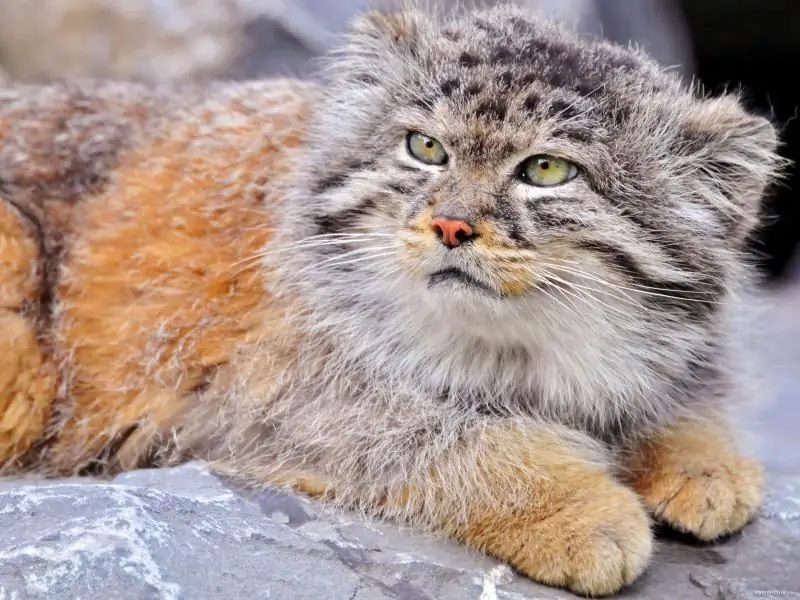
Wild cat manul: a description of the appearance of the animal, its life, character and behavior of the manul in the wild and when kept in captivity. Power features
Steppe Cat: Lifestyle, Habitat, Keeping In Captivity, Breeding And Feeding Of The Cat
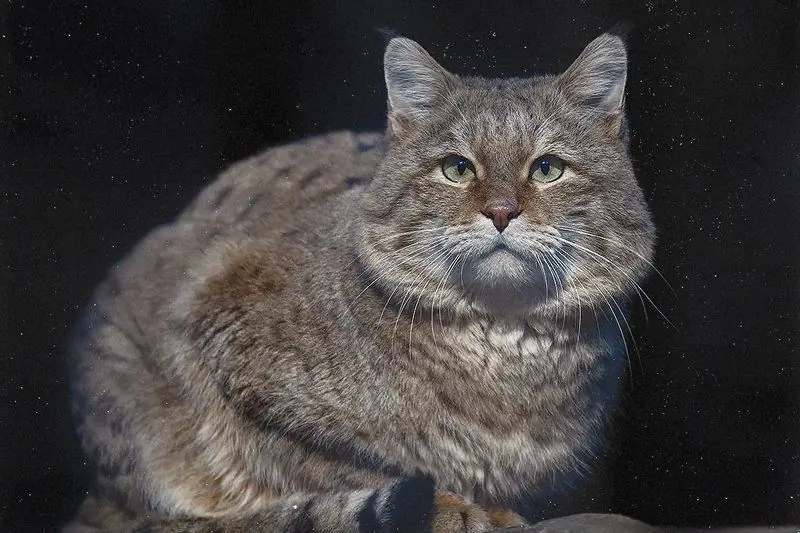
The appearance of a steppe cat. Habitat. Life in the wild. What do spotted cats eat? Reproduction and life expectancy. Wild cats in captivity
Exotic Cat: Description Of The Breed, Nature And Habits Of An Exotic Cat, Reviews Of The Owners, Photos

The history of the breed. Features of the appearance and character of an exotic cat. Exotic care. Choosing a kitten. Typical diseases. Exotic breeding
Far Eastern Forest Cat (Amur): What It Looks Like, Photo, Habitat, Keeping In Captivity
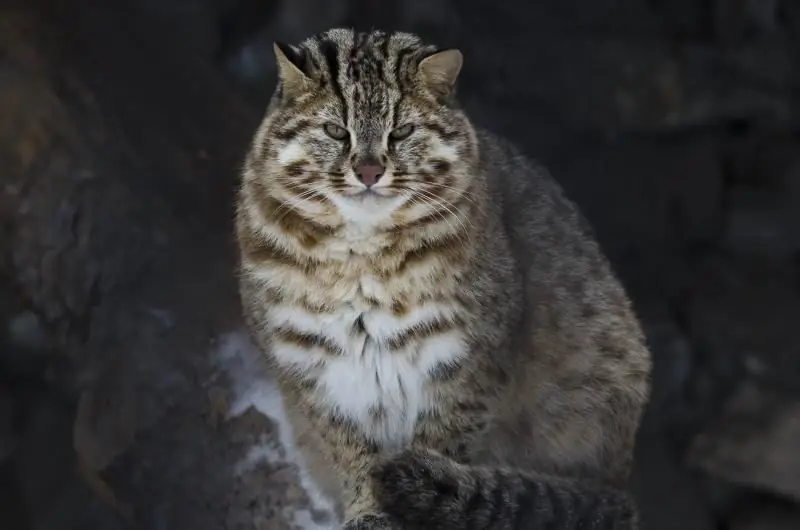
The appearance of the Amur wild cat. Range and lifestyle of the Far Eastern forest cat. The life of an Amur cat in captivity. Conditions of detention and safety
Chinese Cat: Breed Standards, Character And Habits, Health And Nutrition, Photos, Habitats, Keeping In Captivity
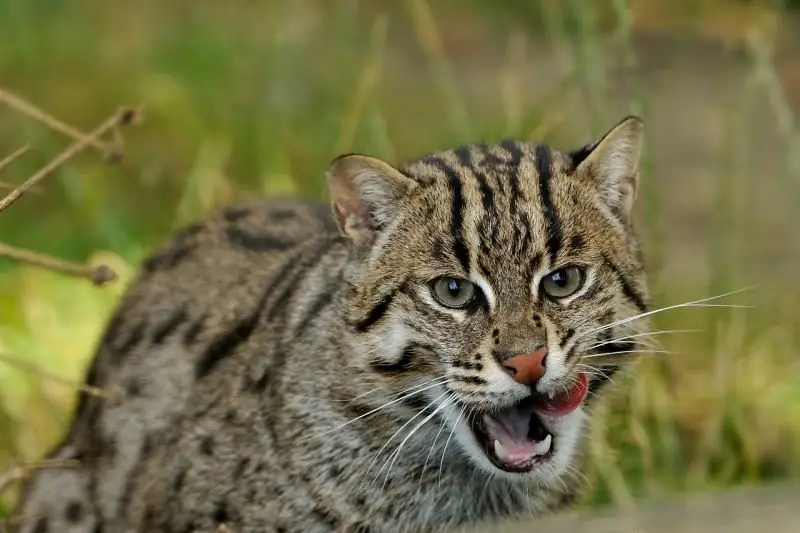
History of the Chinese (mountain) cat. What a gobi cat looks like. Where does the Chinese cat live and what it eats. Reproduction issues. Maintenance and care in captivity
